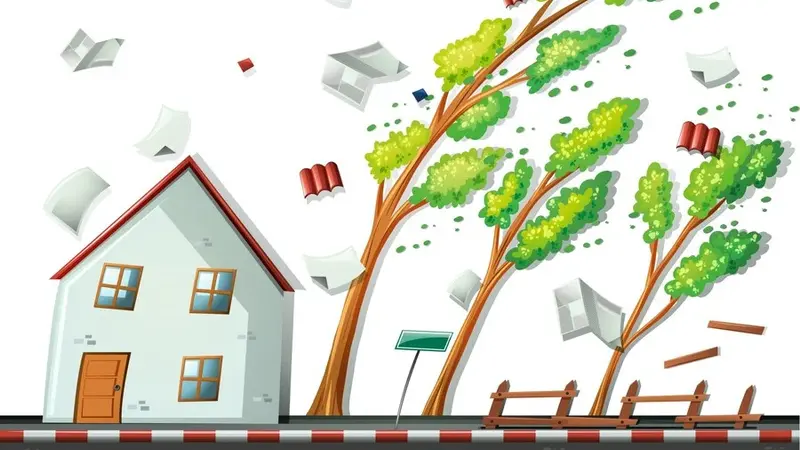Wind damage to roofs can sneak up on homeowners. They often go unnoticed until bigger problems arise. Strong winds can cause real trouble for your rooftop, but being aware of how they work can help you avoid costly repairs later on.
Let’s explore Wind Damage to Roof, what causes wind damage?, how to spot the signs?, and what you can do to protect your home?. Dive into the world of wind damage and learn how to keep your roof safe!
Causes of Wind Damage to Roof
Wind damage to roofs can occur due to various factors, with high winds being the most significant contributor. Here are some factors that contribute to its likelihood:
High Winds
Winds exceeding 50 mph can lift shingles, tiles, or panels. Strong gusts can also dislodge entire sections of roofing material.
Severe Storms
Thunderstorms, hurricanes, and tornadoes produce intense winds that can cause significant damage. These storms can result in localized destruction. This makes it essential to monitor weather forecasts.
Age of Roof
Older roofs are more susceptible to wind damage due to wear and tear, making them less secure against high winds. Regular maintenance and timely replacements can mitigate these risks.
Poor Installation
Incorrectly installed roofing materials can fail to withstand wind pressure, leading to premature damage. It’s crucial to ensure that roofing professionals adhere to proper installation techniques.
Inadequate Maintenance
Lack of regular inspections and maintenance can lead to vulnerabilities that wind can exploit. Keeping your roof in good condition is vital for its durability against harsh weather.
Signs of Wind Damage
Recognizing the signs of wind damage to your roof can help prevent more significant issues down the line. Here’s what to look for:
Missing or Lifted Shingles
Check for any missing or displaced shingles that may have been lifted by the wind. Even a few missing shingles can compromise your roof’s effectiveness and lead to leaks.
Damaged Flashing
Flashing around chimneys, vents, or skylights can be torn or bent, compromising waterproofing. Sealed flashing is critical for preventing water intrusion.
Granule Loss
Examine gutters and downspouts for excessive granules, which can indicate shingle degradation. Granule loss can diminish the protective qualities of your roofing materials.
Bowed or Sagging Roof
A visible sag can signal structural issues caused by wind pressure. This could indicate a more serious underlying problem that requires immediate attention.
Leaks
Water stains on ceilings or walls can indicate that wind has compromised the roof’s integrity. Identifying and addressing leaks promptly is essential to prevent further damage to your home.
Solutions for Wind Damage to Roof
Combatting wind damage to roof involves both preventive measures and immediate repairs:
Emergency Repairs
Address immediate issues like broken or missing shingles. Use tarps if necessary to prevent leaks.
Consult Professionals
Hiring a trusted roofing contractor can provide necessary repairs and maintenance. For instance, Commercial Roofing Oklahoma City offers expert services in roof damage assessment and storm damage repair.
Insurance Claims
Check with your insurance to determine what damage is covered, as the policy may help with repair costs.
Protect Your Home Against Wind Damage to Roof
Understanding wind damage to roof involves recognizing its causes, identifying the signs, and knowing how to respond effectively. By being proactive and taking timely action, you can safeguard your home from the detrimental effects of wind. Don’t wait until it’s too late-take steps towards maintaining your roof today.
Is this article helpful? Keep reading our blog for more. if you have any suggestions, Contact Us




